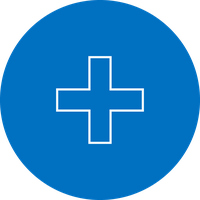
ITEA Impact story
MEDIATE

Boosting healthcare on three fronts: patients, the healthcare system and the economy




Impact highlights
- For Philips, the strategy and improvements based on the MEDIATE results in both its MRI and Image Guided
Therapy businesses have significantly boosted annual sales volume.
- Philips' metal artefact correction techniques have been brought to market with sales of over 1000 licenses in 2 years.
- The unique capabilities of the Philips platform ScanWise Implant have set them above their competitors.
- One of the leading hospitals in the Netherlands using Philips' new Azurion system reported significant time efficiency gains before (12%), during (17%) and after (28%) interventional procedures, which gives the ability to treat 1 more patient a day in the same room (on an average of 6-8 patients a day).
- By the end of 2016, over 1000 operating rooms within Europe had installed Barco's Nexxis platform - a networked digital Operating Room - which is based on MEDIATE results. At the end of 2017 this has increased to over 1600 installations and accelerated adoption is expected over the next few years.
- Following the MEDIATE project, Digisens is now selling 300 licences per year of Cone beam computed tomography (CBCT) reconstruction for clinical systems. Moreover MEDIATE opened new investigation fields for Digisens in the domain of noncircular reconstruction trajectories with a direct impact on industrial inline 3D inspection and homeland security.
The costs of sustaining healthcare for the world's ageing
population are rising constantly and have become
a significant component of global GDP. Healthcare
is a major and growing market, with diagnostic and
interventional medical imaging alone is worth almost
€20 billion globally and growing. The significance of the
market is reflected in the significance of the challenge
that the MEDIATE project took up: to reduce costs and
to improve the predictability of patient outcomes. The
key lies in integrating medical imaging systems fully into
surgical procedures and hospital workflow systems.
MEDIATE focused on three medical fields: cardiology,
oncology and orthopaedics, where planned minimally
invasive procedures follow a pre-programmed workflow
procedure, namely medical imaging to aid diagnosis,
intervention planning, image-guided navigation during
the intervention, execution of the therapy and therapy
response assessment.
Project results
MEDIATE geared its efforts to developing system architectures that enable the integration of multi-modal systems, support multi-vendor interoperability, allow integration of third-party solutions and facilitate user interaction. The resulting set of technologies improves not only healthcare practitioners' knowledge of the condition of individual patients but also the predictability of procedures, reducing complications and obtaining better clinical outcomes from treatment.
The platform-independent, interoperable solutions were based on open, stable standards such as XML Web Services while new software and electronics concepts for user interaction, communication and ergonomics were optimised for the specific tasks and environment of the clinical user.
These solutions had to be intuitive and easy to use, support communication between clinical staff, address logging and reporting as well as facilitate optimal workflow. The software and electronics for navigation and autonomous steering of diagnostic and therapeutic devices were smoothly and seamlessly integrated with imaging systems to enable the real-time acquisition, processing, integration and visualisation of high-resolution medical images from different sources. Finally, there was a focus on the analysis, pattern recognition and decision support for diagnosis, planning and treatment during medical interventions.
Exploitation
In recent years, Philips has released motion compensation enhancements for MRI developed in MEDIATE as well as metal artefact correction techniques based on MEDIATE results. Moreover, in 2015, after updating the relevant IEC standards and actively collaborating with big implant vendors like Medtronic, Abbot (St Jude) and Biotronik, Philips was the first to introduce an easy-to-use user interface, called ScanWise Implant, for scanning patients with MR Conditional implants, serving a rapidly growing population of patients around the globe. The MEDIATE architecture is also the basis for Azurion, Philips' next generation image-guided therapy platform and the new core of its integrated image-guided therapy solutions portfolio. The MEDIATE results on a new architecture for its interventional X-ray systems fit in with Philips' strategy to enter the Image Guided Interventions and Therapy solutions market, which is about 10 times larger than the interventional imaging market alone.
Barco used the results of the MEDIATE project to create its Nexxis platform, an IP-centric solution for video and image management and distribution in the next-generation digital operating rooms. This unique video distribution-over-IP approach allows ‘plug & play', enabling medical equipment to be rolled into the operating room and be instantly connected. Furthermore, the Nexxis system has been selected as the integration and visualisation backbone by leading suppliers of operating room equipment, like Karl Storz, Merivaara and Brainlab.
SurgiQual Institute designed and developed an innovative clinical application that uses radio frequencies to suppress tumours as well as leveraged this work into a more general software environment adapted for planning patient-specific medical interventions.
Digisens developed a new reconstruction algorithm based on an iterative approach for dose reduction and metal artefact reduction.
More information
Download MEDIATE impact storyRelated projects
MEDIATEOrganisations
Barco N.V. (Belgium)Philips (France)
Philips Electronics Nederland BV (The Netherlands)
Philips Medical Systems Nederland BV (The Netherla…
SurgiQual Institute (France)
digisens (France)

